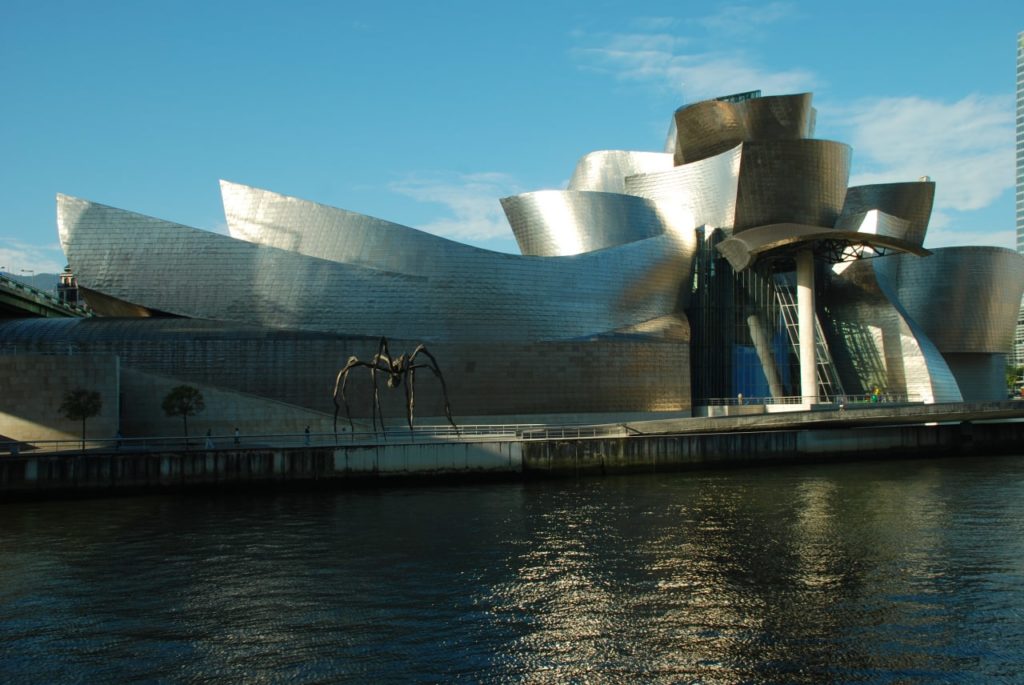We receive much inspiration and many ideas for our work from encountering art, for we think that art and culture play a major role in our societies, heavily shaping all sorts of social interactions and performing a social function. Not surprisingly, we got very curious when we came across the edited volume Can Art Aid In Resolving Conflicts? The book features 103 individuals, most of them introduced as artists, others as curators, museum directors or researchers, for example.
The book spans a multitude of different artistic forms: visual art – such as photography, street art and graffiti as well as paintings – music, theatre performance, or poetry. However, it might surprise the reader to see some collaborators included who are not always considered artists per se. For instance, Virtual Reality as well as architecture and architects feature prominently. Indeed, the Guggenheim museum in Bilbao and how its role as an artistic institution might have contributed to the reduction of violence in the region served as a starting point and motivation for the volume.

The first impression after reading the book is that of a rehearsal of frequently heard opinions: For some art can, maybe even should contribute to the resolution of (violent) conflict. For others, art does not have the power to support such processes. Yet others even fully reject the notion that the arts should play any role or have any specific purpose. None of these positions come as a surprise as one can encounter such views often, coming both from scholars and artists.
Yet, the great majority of the contributors in some way or another supported the idea that art can aid in resolving conflicts. Most of them emphasized art’s role as improving communication, possibly even expressing things through art they could not express otherwise. Others highlighted that art can be a language that can be understood by different people with a variety of backgrounds, be it a ‘universal’ language or a language that can speak ‘directly to the heart’. Another repeatedly mentioned element of art is its participatory aspect, i.e., that the act of doing art can involve people in diverse ways; through this involvement, art might have a peace-supporting effect.
“I think it is not accidental that the word ‘heart’ has ‘art’ as its second half, and ‘hear’ as its opening statement.”
Noa (Achinoam) Nini
But not everyone agrees with that notion. Ben Hampe, for instance, goes that far to start his essay with the words: “I probably think art creates more conflict.” Generally, several writers feel the urge to free art from any purpose, even the noblest ones. For them, only if art should not do anything, art can really become a social force.
The editors’ guiding questions were deliberately kept rather vague. For this reason, the different texts address conflicts on a variety of levels: conflicts in families, neighbourhoods, or such characterized by large-scale physical violence. But this also leads to various understandings of the social role of conflict, of what conflict resolution means to the contributors, and how from their point of view art can contribute to such a resolution – or maybe how it cannot.
Just to name a few examples: Olcay Kuş writes: “Art does not provide solutions for the conflict, but rather points to the conflict. […] What should solve the problem is politics.” Anastasia Albokrinova, then, “prefer[s] the idea that art is not engaged in the conciliation of conflicting parties, but rather shows them the path to understanding each other.” For Gal Weinstein, “interesting art exposes unseen conflicts rather than resolving them”. But are these not crucial steps towards the resolution or transformation of conflicts?
Another idea that stuck out concerned the metaphor of ‘art as a bridge’ that was applied in the editors’ guiding questions. Especially Elizabeth Hoak-Doering’s statement is thought-provoking: “I am uncomfortable dividing people into ‘one side – and the other,’ but this is what is implied when a ‘bridge’ needs to be built.” Does that mean that conceptualizing art as a possible bridge in a conflict manifests rather than transforms antagonism?
This once again shows how complex the topic is, insusceptible to simple answers. Therefore, Can Art Aid In Resolving Conflicts? is a highly interesting book for everyone who wants to hear the perspective of ‘practitioners’ in the fields of art. Nonetheless, one might criticize that the book, once acquainted with the theme, repeats the same points of view over and over again. Furthermore, the more sceptical contributions leave a strong impression. Yet, this might exactly be the strength of the book: Instead of offering one definite answer to the overall question, the volume demands from its reader to develop her own take on the issue. It reminds us that the role of art in violent conflict is always context-dependent, hardly generalizable and that our perception depends strongly on our underlying understandings of core concepts such as conflict, peace, and even art.
Can Art Aid In Resolving Conflicts? (2018). Edited by Noam Lemelshtrich Latar, Jerry Wind and Ornat Lev-Er. Frame Publishers, Amsterdam
